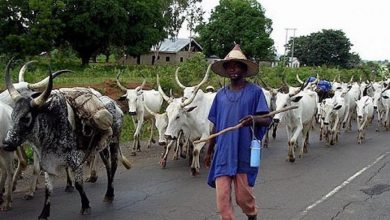
39% of Nigerian children engaged in child labour, says national bureau of statistics
The National Bureau of Statistics (NBS) has showed that about 50.5 per cent of Nigerian children, aged between 5 and 17, are engaged in economic activities, explaining that 39.2 per cent of children (24, 673, 485) are in child labour and 22.9 per cent of children (14,390,353) are involved in hazardous work.
Penpushing reports that Bureau in its report titled “Nigeria Child Labour and Forced Labour Survey 2022″, released on Thursday, explained that Child Labour, refers to work for which children are either too young or that may be physically or psychologically injurious to their health and well-being.
The report disclosed that, the North-West geopolitical zone had the highest number of children in child labour (6,407,102) and in hazardous work (3,266,728), adding that the South-East region has the highest prevalence of children involved in child labour at 49.9 per cent.

“In the 5-17 age group, nearly 94 per cent of children in child labour are involved in own-use production of goods (including collection of firewood and fetching water), 24 per cent are in employment and 11 per cent perform unpaid trainee work,” the report said.
Penpushing further reports that it stated children aged 5-14 years old in child labour are less likely to be in employment and more likely to be engaged in own-use production of goods than children aged 15-17 years old in child labour.
The Bureau explained that almost 96 per cent of children in child labour who live in rural areas are engaged in own-use production of goods and nearly 26 per cent are in employment compared to 89 per cent and 20 per cent respectively of children in child labour who live in urban areas.
Penpushing also reports that the statistics added that in the 5 -17 age group, children in child labour spend an average of 14.6 hours per week working, while older children in child labour spend more time per week at work than younger children.
‘Children aged 15 – 17 years old in child labour spend an average of 24.6 hours per week working compared to 19.4 hours for children aged 12 – 14 years old and 9.8 hours for children aged 5 – 11 years old’.

“Children in child labour who live in rural areas spend 2.3 more hours working on average than children in child labour who live in urban areas. Boys in child labour spend more time working per week on average than girls in child labour,” it said.
Penpushing reports that the National Bureau of Statistics (NBS), however, pointed out that these estimates do not include time spent performing household chores, stressing that employment is the most time-intensive form of work on average for children in child labour with children spending on average 16 hours per week.
‘Time-intensity in employment and unpaid trainee work is substantially higher in urban areas than the national average. Children in child labour are less likely to attend school than those not in child labour,” it said.
Penpushing further reports that the report emphasised that in the 5-17 age group, 53.3 per cent of children in child labour have been exposed to at least one workplace hazard, pointing out that children in child labour who live in rural areas are more likely to be exposed to workplace hazards than those who live in urban areas.

‘Children in child labour who live in rural areas are more likely to be exposed to workplace hazards than those who live in urban areas. 16.3 per cent of children in child labour have experienced a work-related injury. Boys in child labour are more likely to have experienced a work-related injury than girls in child labour,” it said.
Penpushing also reports that in gender dynamic the bureau explained that girls are more likely to be engaged in household chores than boys, noting that 62.2 per cent of girls performing household chores compared to 50.8 per cent of boys
“62.2 per cent of girls performing household chores compared to 50.8 per cent of boys. Children are often engaged in household chores in addition to work in economic activities. 73.1 per cent of children are both in child labour and household chores,” it said.

Penpushing reports that National Bureau of Statistics (NBS) added that in the 5-14 age group, 77.6 per cent of children attend school while 46.5 per cent are working and 11.2 per cent are exclusively working.
“Children in the urban areas are substantially less likely to be working only and more likely to attend school only than their rural counterparts. There are few differences between boys and girls’, the bureau stated.
‘In the 5-17 age group, more than two-thirds of children are working and 21.9 per cent are exclusively working. Children living in rural areas are 12 percentage points more likely to be working and 17 percentage points less likely to attend school than children living in urban areas,” the report said.
FOOTNOTE: You want to share story with us? You want to advertise with us? You need publicity for product, or service, or event? Contact us on WhatsApp +2348073463653 or email penpushing@yahoo.com







